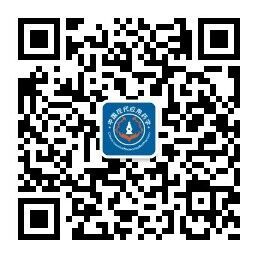| 引用本文: | 谢琴琴,季欢欢,杨雅,龚美玲,贾运涛.基于机器学习构建儿童抗结核药物性肝损伤风险预测模型[J].中国现代应用药学,2024,41(24):. |
| XIE Qinqin,JI Huanhuan,YANG Ya,GONG Mieling,JIA Yuntao.Construction of a risk prediction model for childhood antituberculosis drug-induced liver injury based on machine learning[J].Chin J Mod Appl Pharm(中国现代应用药学),2024,41(24):. |
|
| 摘要: |
| 目的 采用机器学习算法构建儿童抗结核药物性肝损伤(anti-tuberculosis drug-induced liver injury,ATB-DILI)风险预测模型。方法 选取2013年1月至2022年12月重庆医科大学附属儿童医院确诊为结核病的儿童患者为研究对象。采用单因素及LASSO回归筛选特征变量,基于极端梯度提升(extreme gradient boosting,XGBoost) 、自适应增强(adaptive boosting,AdaBoost)、轻量梯度提升(light gradient boosting machine,LGBM)、随机森林(random forest,RF)4种机器学习算法分别构建预测模型。通过受试者工作特征曲线下面积(area under curve,AUC)、准确度、精确度、召回率以及F1分数评估模型性能,应用shapley加性解释(shapley additive explanation,SHAP)算法对最优模型进行解释性分析,构建列线图使预测结果可视化。结果 共纳入2796例结核患者,ATB-DILI发生率为5.47%。XGBoost模型整体预测性能最好,AUC(0.881)、准确率(0.951)、精确度(0.981)、召回率(0.956)和F1分数(0.968)。基于SHAP算法对XGBoost模型的特征变量解释分析,当结核复治,谷丙转氨酶、谷氨酰转肽酶、直接胆红素基线值高,住院天数延长,异烟肼治疗天数≤45天,异烟肼累积总剂量高和乙胺丁醇治疗天数长时,儿童发生ATB-DILI风险增加。结论 基于XGBoost算法构建的儿童ATB-DILI风险预测模型性能最优。SHAP算法为模型提供明确解释,列线图法使预测结果易于理解和应用,有助于临床早期识别和预防儿童ATB-DILI的发生。 |
| 关键词: 儿童 抗结核治疗 抗结核药物性肝损伤 机器学习 风险预测模型 |
| DOI: |
| 分类号: |
| 基金项目:重庆医科大学未来医学青年创新团队发展支持计划项目(No.W0081);重庆市科卫联合项目(2022ZDXM020);重庆医科大学研究生智慧医学专项研发计划(YJSZHYX202209) |
|
| Construction of a risk prediction model for childhood antituberculosis drug-induced liver injury based on machine learning |
|
XIE Qinqin1, JI Huanhuan2, YANG Ya2, GONG Mieling1, JIA Yuntao2
|
|
1.School of Pharmacy, Chongqing Medical University;2.Department of Pharmacy Children’s Hospital of Chongqing Medical University, National Clinical Research Center for Child Health and Disorders, Ministry of Education Key Laboratory of Child Development and Disorders,China International Science and Technology Cooperation base of Child development and Critical Disorders, Chongqing Key Laboratory of Child Rare Diseases in Infection and Immunity
|
| Abstract: |
| OBJECTIVE To construct a risk prediction model for antituberculosis drug-induced liver injury (ATB-DILI) in children using machine learning algorithm. METHODS Childhood patients diagnosed with tuberculosis in the Children's Hospital of Chongqing Medical University from January 2013 to December 2022 were selected for the study. Single factor and LASSO regression were used to screen the feature variables, based on extreme gradient boosting (XGBoost), adaptive boosting (AdaBoost), light gradient boosting machine LGBM), random forest (RF), and four machine learning algorithms were used to construct the prediction model. The performance of the models was evaluated by the area under curve (AUC), accuracy, precision, recall and F1 score of the subjects' work characteristics, and the optimal model was interpreted by applying the shapley additive explanation (SHAP) algorithm, and a column chart was constructed to visualise the prediction results. visualisation. RESULTS A total of 2796 TB patients were included and the incidence of ATB-DILI was 5.47%.The XGBoost model had the best overall predictive performance with AUC (0.881), accuracy (0.951), precision (0.981), recall (0.956) and F1 score (0.968). Based on the SHAP algorithm's analysis of the interpretation of the characteristic variables of the XGBoost model, children were at increased risk of ATB-DILI when TB was resumed, high baseline values of alanine aminotransferase, gamma-glutamyl transferase, direct bilirubin, prolonged hospitalisation days, ≤ 45 days of isoniazid treatment, high cumulative total isoniazid dose and prolonged days of ethambutol treatment were observed. CONCLUSION The risk prediction model for ATB-DILI in children constructed based on the XGBoost algorithm performed optimally.The SHAP algorithm provided a clear interpretation of the model, and the Nomogram made the prediction results easier to understand and apply, which helped in the early clinical identification and prevention of ATB-DILI in children. |
| Key words: children anti-tuberculosis treatment anti-tuberculosis drug induced liver injury machine learning risk prediction models |
